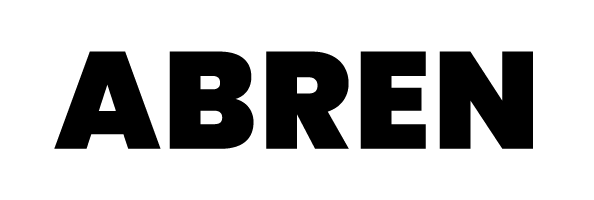|
Getting your Trinity Audio player ready...
|
This article is a third in a series looking at Ethiopia’s economy. Previous papers are are referenced below.
The national debt of Ethiopia has been a long time in the making, and debt arrears accumulated in past decades are dragging its economy today.
Ethiopia’s overall debt, including both public and publicly guaranteed debt, decreased by around 8 percentage points compared to the country’s total economic output in the fiscal year 2021/22. By the end of June 2022, the total amount of public and publicly guaranteed debt in Ethiopia was 48 percent of the country’s GDP. This figure decreased from 56 percent of GDP compared to the previous year, and was about 11 percent lower than the highest debt levels reached in 2017/18.

This decline in debt was primarily due to a decrease in external funding. The ratio of domestic debt to GDP also decreased, although it rose slightly in line with inflation. Out of the total debt, the Federal government was accountable for 77 percent of total debt and the central bank for 4 percent, while state-owned enterprises (SOEs) were responsible for the remaining 18 percent of the debt. Debt transferred from various SOE entities to the federal government has since increased slightly.
As of August 2022, foreign debt made up about 48 percent of the total public and publicly guaranteed debt. The external debt that is owed by the government and publicly guaranteed (PPG) decreased to 23 Percent of the country’s GDP, down from 29 percent compared to the previous year. The main reason for this decrease was the reduction in funds provided to the Federal government. This occurred because external creditors, both official and market-based, stopped providing funds in response to Ethiopia’s request for debt treatment and due to the domestic conflict.
The Federal government is responsible for about 70 percent of the total external debt, with most of it owed to the World Bank and official creditors. Over the past four years, the PPG external debt ratio for state-owned enterprises (SOEs) included in the Debt Sustainability Analysis (DSA) has consistently declined, with a total decrease of 8 percentage points of GDP since 2017/18. This decline is primarily a result of the government’s proactive measures to limit external borrowing by SOEs, including not contracting new non-concessional external debt. These measures align with the World Bank’s Non-Concessional Borrowing Policy (NCBP) and a performance requirement under the 2019 Extended Credit Facility-Extended Fund Facility (ECF-EFF), which is an International Monetary Fund (IMF) debt restricting program.
Most of the external debt is owed to official bilateral creditors. The International Development Association (IDA) of the World Bank, and official non-Paris club creditors make up about 40 percent and 38 percent of the total debt, respectively. Non-official creditors hold about 6 percent of the debt. Includes in this is a $1 billion Eurobond that will mature in December 2024, as well as debt from state-owned enterprises (SOEs) that is not guaranteed by export credit agencies.

Ethiopia received financial support from the International Development Association (IDA) in the form of grants and concessional debt. In the fiscal year 2021 to 2022, the net transfers from the IDA amounted to US$1.1 billion, which was lower than the previous years. The approved new arrangements for the same period totaled US$1.9 billion. The IMF also provided financing to Ethiopia through different arrangements, including a blended ECF-EFF arrangement and emergency financing in response to the COVID-19 pandemic.
In addition, Debt service relief was granted under the Catastrophe Containment and Relief Trust (CCRT) until April 2022. Additionally, Ethiopia received debt service relief under the G20 Debt Service Suspension Initiative (DSSI) but did not seek further relief in the later phase. Principal repayments of bilateral deposits held at the central bank were restructured, providing relief estimated at US$1.3 billion over the next few years.
Authorities in Ethiopia asked for help to manage debt through a program called the G20 Common Framework (CF) in February 2021. As a result, a group called the Creditor Committee (CC) was created in September 2021 to discuss and address the debt. The aim of the request was to make the country’s debt more manageable and reduce the risk of financial difficulties. This goal was set to be achieved by the end of a previous program called the 2019 ECF-EFF arrangements. The same requirement will continue under the new program supported by the International Monetary Fund (IMF). The Creditor Committee (CC) has held four meetings so far, with the most recent one taking place in February , 2023. The CC says, “it is committed to finding a suitable solution for Ethiopia’s debt challenges following the guidelines of the Common Framework for debt treatments.”
Domestic debt or the amount of debt owed within the country has decreased. By the end of June 2022, it was at 25 percent of the country’s total economic output (GDP), which is lower than the highest point reached in 2017/18 at 29.4 percent of GDP. A significant portion of the domestic debt, specifically the debt of State-Owned Enterprises (SOEs), has been transferred to the Liability and Asset Management Corporation (LAMC), a financial instrument created to offload the debt burden of SOEs. LMAC debt is now considered government debt. A previous report by Abren discussed the SOE debt in relation to banks and the state.

LAMC (Liability and Asset Management Corporation) was created to handle the debt burden of State-Owned Enterprises (SOEs). In August 2021, the SOE domestic debt, which amounted to nearly ETB 400 billion (9.4 percent of the country’s total economic output), was transferred to LAMC.
LAMC is classified as an extra-budgetary government agency and has used the local currency proceeds from the first Safaricom telecom license auction, held in the previous fiscal year (US$850 million) to make repayments to the CBE (Commercial Bank of Ethiopia). This transferred debt is now considered government debt. However, despite the repayments made by LAMC, the outstanding debt held by the agency increased to ETB 420.7 billion by the end of June 2022, compared to ETB 398.7 billion at the end of June 2021, as interest payment for old unpaid debt were added to the total.
This means that the Federal Government is currently responsible for 84 percent of the overall domestic debt. This debt transfer to the sovereign state is meant to allow SOEs to reduce their debt. As a result, the domestic debt of SOEs has decreased from 13.3 percent of GDP at the end of June 2021 to 4.0 percent of GDP at the end of June 2022.
The national debt of Ethiopia has been a long time in the making. Debt arrears accumulated in past decades are dragging its economy today. The country is finally reckoning with this debt through a myriad of instruments mentioned above. However, this is still a temporary solution to help restructure payment plans and extend the time of repayment. Given the circumstance it may yet be the most pragmatic approach, but it does not address the root cause.
The primary reason for this debt are inefficient SOEs coupled with corrupt elite and government officials who have, in one way or another offshored wealth from these organizations. This vicious cycle is evermore omnipresent in most of Africa and Ethiopia is no different. Moreover, this arrangement is incentivized by the international financial system, which inherently facilitates the transfer of embezzled funds from poor countries to financial centers in rich countries. Most of that wealth is still stuck in financial institutions located in New York, London, Singapore and more. Repatriating these funds has been a tall order for Ethiopia, requiring international cooperation, which is not forthcoming.
A confluence of domestic conflict and global black swan events have had a destabilizing effect. The country requires credible external support as it seeks to embark on its Home-Grown Economic Growth Plan. Nonetheless, as discussed in a previous report, the economy has shown resilience by continued strong growth relative to current international growth averages.
Countries in the Horn of Africa region, as well as the wider African continent face similar challenges. As Prime Minister Abiy Ahmed said in his remarks at the the New Financing Pact Summit in Paris today, “right now, the headaches of low income governments in Africa is not to think about development, but to think about how we can manage debt”. The albatross of national debts for developing economies needs an international solution.

More on Ethiopia’s economy











You must be logged in to post a comment.